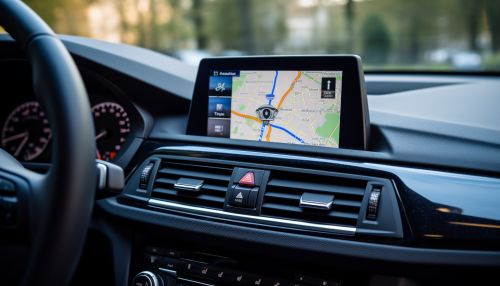Satellite navigation
Introduction
Satellite navigation, also known as satnav, is a system that uses satellites to provide autonomous geo-spatial positioning. It allows small electronic receivers to determine their location (longitude, latitude, and altitude) to within a few meters using time signals transmitted along a line of sight by radio from satellites. Receivers calculate the precise time as well as the distance to each satellite, from which the exact geographical location can be determined.


History
The concept of satellite navigation was first introduced by the U.S. Department of Defense with the launch of the Transit system in the 1960s. This early system, used primarily by the U.S. Navy to update its Polaris missile submarines, was based on the Doppler effect. The first satellite navigation system, Transit, used by the United States Navy, was first successfully tested in 1960. It used a constellation of five satellites and could provide a navigational fix approximately once per hour.
There are several types of satellite navigation systems currently in operation, including the Global Positioning System (GPS), the Russian GLONASS, the European Union's Galileo, and China's BeiDou. Each of these systems operates a constellation of satellites, broadcasting precise timing signals by radio to GPS receivers, allowing them to accurately determine their location.
Global Positioning System (GPS)
The GPS is a satellite-based radionavigation system owned by the United States government and operated by the U.S. Air Force. It is one of the global navigation satellite systems (GNSS) that provides geolocation and time information to a GPS receiver anywhere on or near the Earth where there is an unobstructed line of sight to four or more GPS satellites.
GLONASS
GLONASS (GLObal NAvigation Satellite System) is Russia's version of GPS. It was developed during the same time as the GPS system, but it suffered from lack of investment in the years following the collapse of the Soviet Union, leading to a significant decline in capability. However, significant investment in the 21st century has resulted in GLONASS again becoming a fully operational global navigation satellite system.
Galileo
Galileo is a global navigation satellite system created by the European Union through the European Space Agency (ESA). Named after the Italian astronomer Galileo Galilei, it is intended to provide an independent high-precision positioning system so European nations do not have to rely on the U.S. GPS, or the Russian GLONASS systems, which could be disabled or degraded by their operators at any time.
BeiDou
The BeiDou Navigation Satellite System is a Chinese satellite navigation system. It consists of two separate satellite constellations – the limited test system that has been operating since 2000, and a full-scale global navigation system that began operation in 2020.
Applications
Satellite navigation systems have a wide range of applications. They are used in navigation and positioning applications in aviation, maritime, and land-based vehicles. They are also used in surveying and geodesy, search and rescue operations, tracking and fleet management, and in scientific research such as atmospheric science and climate studies.
Challenges and Limitations
Despite the many benefits of satellite navigation systems, there are also challenges and limitations. These include signal interference, system vulnerability, privacy concerns, and the potential for misuse in warfare. Additionally, the accuracy of satellite navigation can be affected by factors such as atmospheric conditions, signal blockage by buildings, and receiver quality.
Future Developments
Future developments in satellite navigation technology are likely to focus on increasing the accuracy and reliability of the systems, as well as developing new applications for the technology. This may include integration with other technologies, such as augmented reality, to provide enhanced navigation and location-based services.
